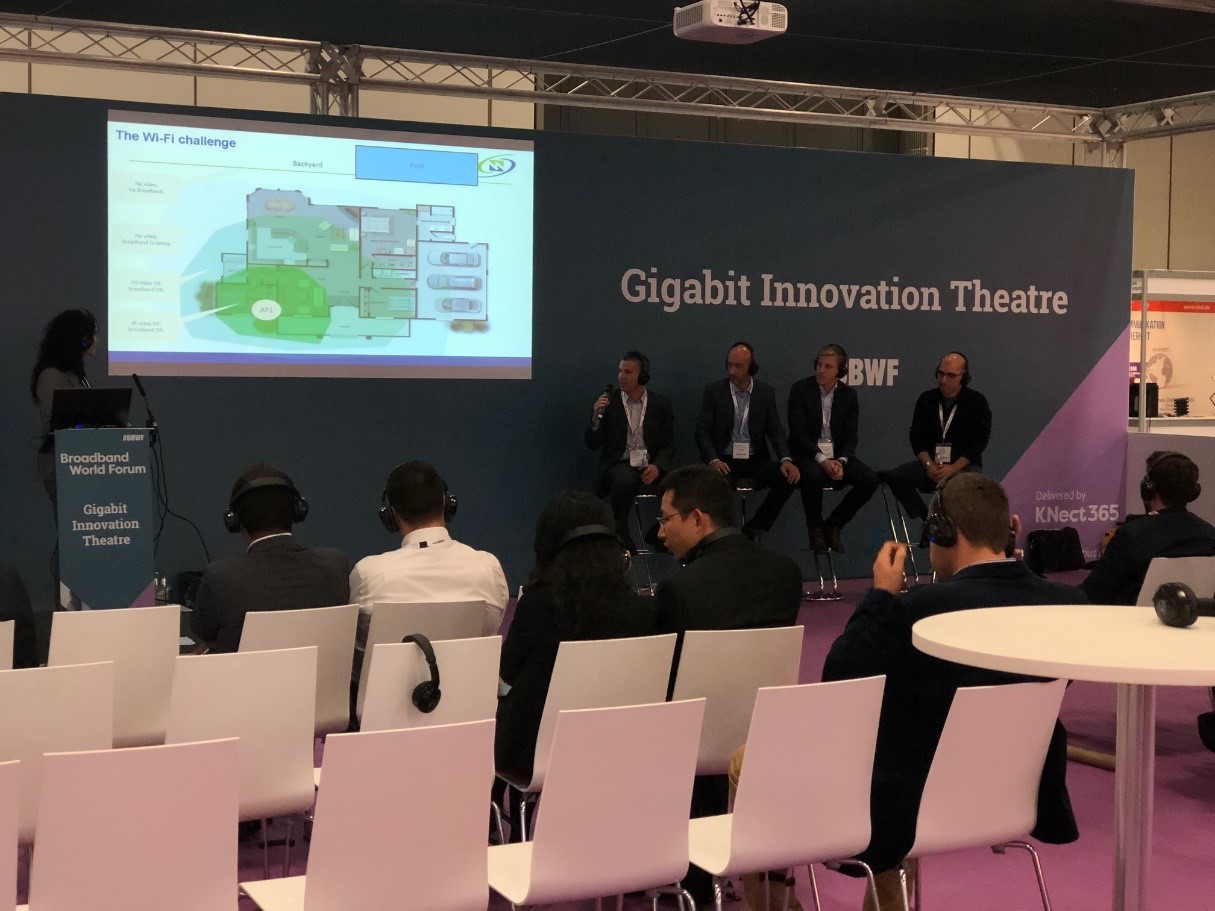By Dr Len Dauphinee, HomeGrid Forum President
At the end of October, our team joined leading industry professionals at Broadband World Forum (BBWF) in Berlin. A highlight in the events calendar, BBWF is a great platform to discuss industry trends, new developments, and share recent successes.
During the event, we had the opportunity to take part in several sessions, including a panel organised and hosted by the Forum and a stand-alone speaking session. Interoperability was a central theme of the HomeGrid Forum hosted panel session, which was titled “G.hn and the future of smart homes. Gigabit Home Networking and interoperability. A vision shared by service providers.”
The panel was chaired by Livia Rosu, HomeGrid Forum Marketing Working Group Chair, and featured;
- Dr. Len Dauphinee, Vice President and Chief Technology Officer, Broadband Group, MaxLinear & President of the HomeGrid Forum
- Mr. Kristoffer Roberg, Sr. Product Line Manager, ARRIS
- Mr. Fazel Taslimi, EVP Head NA R&D, CIG
- Mr. Tsahi Tal, AVP Product Management, Celeno
During the session, we discussed the shifting priorities of the industries in which we operate, as these priorities are arguably driving the need for interoperability across the board. As consumers demand always-on, reliable connectivity, both inside and outside the home, we are witnessing unprecedented challenges, and at the same time, unique and innovative solutions.
Many of us on the panel are working to create and develop innovative solutions, technologies, and standards that can work together and revitalise legacy infrastructure. It was great to openly discuss the challenges faced by our industry, and how G.hn can overcome them, both now and in the future regardless of the demands of the contemporary digital lifestyle.
During the stand-alone speaking session, I represented the HomeGrid Forum and discussed why smart home networking needs mesh connectivity to support the demands for seamless wired and wireless connectivity, that services the entire home. As part of the presentation, I explained why 2.4 GHz Wi-Fi is so slow (because there are only three 20MHz channels or a single 40MHz channel available, which essentially means the band is overcrowded), and why 5Ghz 802.11ac Wi-Fi is a better option (there are two 80MHz non-DFS channels available).
A lot of people don’t realise that the infrastructure required for Wi-Fi mesh connectivity is already available in their homes. For instance, when G.hn is utilised as a wired backbone, it can support wireless connectivity, through routers and boosters, to extend coverage further than any other product currently on the market.
This enables it to provide uninterrupted coverage to every corner of the home. Additional advantages, include the fact it offers security through per-link encryption, eliminates interference, and offers high performance. While many within the industry are focusing on the advantages of wireless connectivity, it is important to consider the opportunities afforded by wired backbones, such as G.hn.
Using Wi-Fi mesh without a wired backbone can lead to issues around bandwidth and airtime resources, which are taken up by backhaul. In addition, it arguably worsens congestion for apartments and MDUs, it is expensive to make Wi-Fi backhaul high throughput, and alternative options to G.hn tend to be power inefficient for long-range in-home connectivity. Lastly, it raises the question as to whether areas that already suffer from poor Wi-Fi coverage should rely on Wi-Fi to connect to APs.
The speaking session was a great opportunity to discuss why mesh networking is the future of connectivity, and how G.hn can support this goal long-term. If you would like to learn more about the HomeGrid Forum, please visit: http://www.homegridforum.org/ and follow us on Twitter @HomeGrid_Forum.

